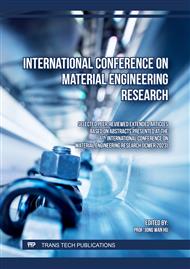p.11
p.17
p.25
p.33
p.41
p.51
p.63
p.71
p.77
Tool Surface Degradation and Adhesion in Aluminium Forging
Abstract:
Tool surface deterioration is a crucial effect limiting the efficiency of forging processes. Prior work on wear is limited to steel forging while investigations on tribology in aluminium forging are limited to an abstract or simplified level. The presented work aims at contributing to filling this gap with a holistic analytic approach including ball-on-disc (BoD) tests, ring compression (RC) tests and serial forging (SF) tests close to industrial applications in order to gain insights on effects and influences of surface deterioration and evaluate the suitability of different tool coatings. The results show that the primary influence on surface adhesion in aluminium forging is the superposition of surface enlargement and contact pressure of the material flow. Duplex-treated tools with the combination of a nitriding in the first step and an additional coating with chromium nitride (CrN) afterwards show a significant reduction of aluminium adhesion in ring compression and serial forging tests, representing a promising approach to tool life enhancement in forging applications.
Info:
Periodical:
Pages:
41-49
Citation:
Online since:
September 2023
Authors:
Keywords:
Price:
Сopyright:
© 2023 Trans Tech Publications Ltd. All Rights Reserved
Share:
Citation:



